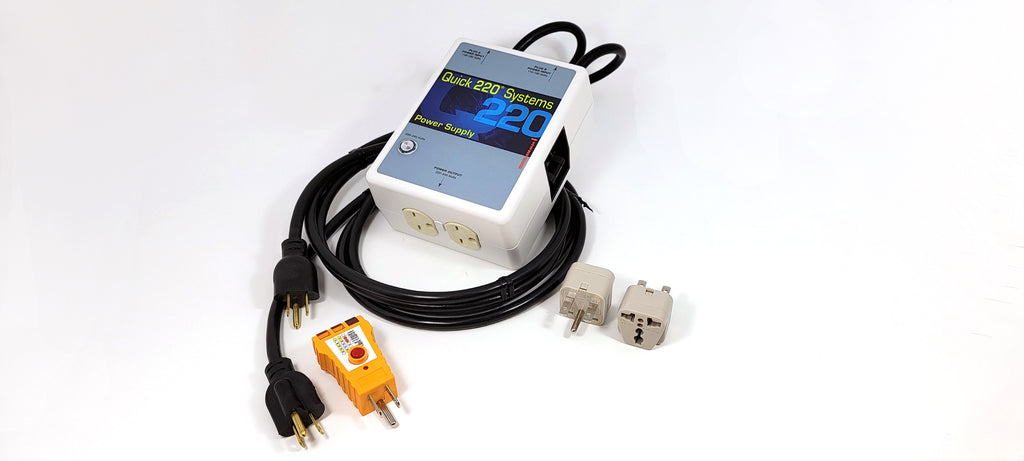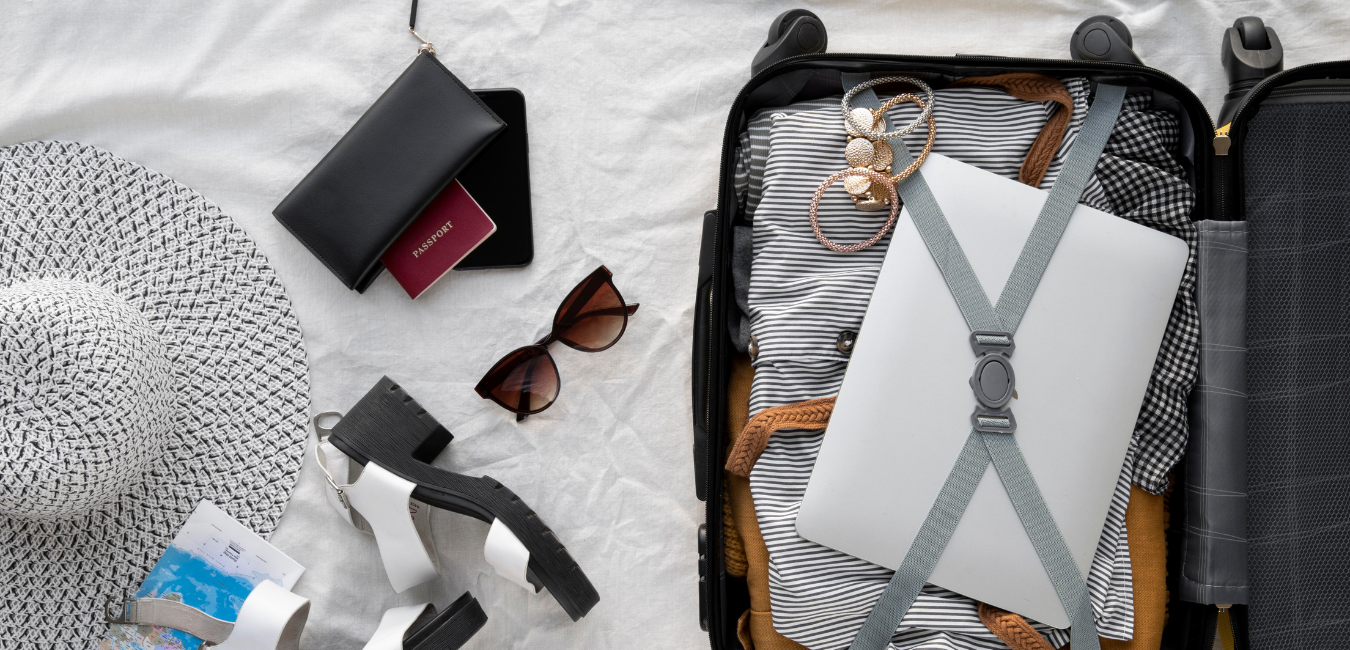Plug Adapters & Voltage Converter for Traveling to North America
North America entices millions of tourists each year looking to discover and explore the vast region. However, suppose you plan to explore it with your must-have gadgets like a cellphone, tablet, camera, or more. In that case, you will need to figure out how to charge each of them into the local power grid.
So many countries—and even regions— develop their own electricity standards. It's safe to say that diversity reigns out here. In some cases, you'll only need a plug adapter, but there are many where you'll need a voltage converter. Follow these steps to figure out if you need an adapter or converter throughout your travels through the United States:
- Verify the plug type
- Purchase the correct adapter plug for that outlet
- Verify the voltage in the outlet
- Verify the voltage input on each device
- Get the proper voltage conversion accessory
Plug Types
Your first challenge is ensuring you can plug your device into the wall outlet. In places where the plug type differs, you'll need an adapter plug with the correct prong configuration for outlets at your destination.

According to the International Electrotechnical Commission (IEC), 16 different plugs (Type A through Type O) are used worldwide. There are two associated plug types for the United States and Canada: Type A or NEMA 1-15 and Type B or NEMA 5-15. Type A is the first plug type with two flat parallel pins, and Type B is the second type with two flat parallel pins and a grounding pin. An adapter plug will be vital if your devices do not fit either the Type A or the Type B wall outlet.
Adapter Plug Shopping Tips
An adapter will allow you to plug your appliance into a different type of outlet. In addition, most are small and lightweight, making them easy to pack.
However, a universal travel adapter is well worth the investment if you travel a lot. A universal adapter is an all-in-one device allowing most prong and socket types to be compatible. This is the best device for frequent travelers, as you won't need to worry about changing the prongs on your adapter.
Before purchasing a Travel Adapter
Before purchasing your travel adapter, here are some essential shopping tips and tricks:
- Buy adapter plugs before you leave. Don't leave it to chance to find out if your destination will have an adapter or waste precious travel time searching for one.
- Pay attention to the back side of the adapter. You need to plug your device into the backside of an adapter plug.
- Examine the adapter plug and universal adapters carefully. Don't assume an adapter plug or a universal adapter will cover you. Instead, double-check that they have the specific plug or setting that works in the United States before you purchase.
- Charging multiple devices: Simultaneously charging more than one device will require an adapter plug for each device or a single adapter plug and a power strip with multiple outlets. In addition, a multi-outlet surge protector will add protection for places with less stable electrical grids.
Quick 220® International Power Strip

If you want to power multiple devices, consider an electrical strip to power everything in one location. The Quick 220® international power strip is perfect for your devices. It can power anything from the UK, Asia, Europe, South America, Africa, Australia, and North America. Since America has the universal international multi-prong outlets, they provide the correct plug face for all of your appliances or hair styling tools. In addition, this power strip has a Type B wall plug and a built-in surge protector to protect your electronics.
The World of Voltages
Throughout the world, two voltage ranges are standard, 110-120V or 208-240V. Suppose your electronic device falls into either of those ranges. In that case, the variations within that range will not be an issue. For example, it will work if the local power is 220 volts, and your device requires an input of 240 volts.
In Europe and much of the rest of the world, the voltage from the public grid is 220-240 volts. However, outlets in North America output 120 volts. The good news is that the power delivered to every building is still 240 volts. Once inside, the current splits into two phases of 110-120 volts dispersed throughout the building and called phases. These phases can be electrically tapped with a Quick 220® System to give 208-240 volts.
What is Your Voltage?
Your next step will be to check the voltage (V) for your destination and the requirements for each device. For more information on the voltage of your destination, refer to the IEC World Plugs List, order the "Electric Potential" column or call the location you will be staying. On the other hand, devices can be single, dual, or multi-voltage devices.
Single and Multi-Voltage Devices
If you have a newer electronic device, there is a possibility you'll only need a plug adapter. First, check the label on your device to find out if this is the case. The label is usually on the back of the device, the power cord, or molded into the plastic. Look for the word "INPUT" for the information you need.
If your device is single-voltage, it will have a narrow voltage range (usually 220-240V for European devices). These are generally older devices or items with sensitive electronics and no built-in transformer. You'll need a plug adapter and a Quick 220® voltage converter for these items.
A dual-voltage device will use a slash to separate the two voltages (120V/240V in most cases). These are usually newer consumer electrical devices designed for several countries and require minimal modification. Dual voltage devices typically have a switch somewhere on them to specify which voltage they are operating.
Multi-voltage items use a dash in the INPUT line to indicate that they can operate from a wide range of voltages (typically 100-240V). Devices like this only require a plug adapter.
Voltage Converters

In the United States and Canada, the supply voltage is 120V. However, suppose you have a single-voltage device that differs from the voltage level at your destination. Then, a voltage converter is necessary for the appliance to work safely and correctly at 120V.
The good news is that Quick 220® Systems has you covered on everything you need to operate your international devices from North American outlets. We offer universal plug adapters that even support Shuko-style grounding plugs. We even have incredibly portable and easy-to-use voltage adapters to supply your devices.
How does the Quick 220® voltage converter work?
Remember when we talked about two phases, each at 120V, in North American buildings? A Quick 220® voltage converter can combine those phases. All you need is two standard outlets, one in each of the phases. Plug one supply cord from the Quick 220® voltage converter into each one. The indicator on the front of the unit will light up if it is connected properly. Then flip the breaker on the side of the unit to supply the outlet. However, this still gives you a North American spec NEMA 6 outlet. To connect your device, take the plug and insert it into the universal plug adapter or the Shuko grounding adapter if it's needed.
Wrapping Up
North America is full of vast terrains, memorable landmarks, and rich with culture. Ensure your must-have gadgets can capture each moment by staying powered up throughout your stay. Before your trip, verify the plug type and voltage to where you will be staying. Suppose an adapter plug or voltage converter is needed for your electric devices. In that case, purchasing these before your travels is essential.
If you still have unanswered questions, leave a comment below. We'll update this post with your question and our answer.
If you're unsure what voltage or Quick 220® systems you need, try our simple questionnaire or contact us for help, we would love to hear from you.
Telephone: 1-800-347-0394 (US & Canada) or 1-602-938-6057
Fax: 1-602-862-0215
Email: sales@quick220.com

